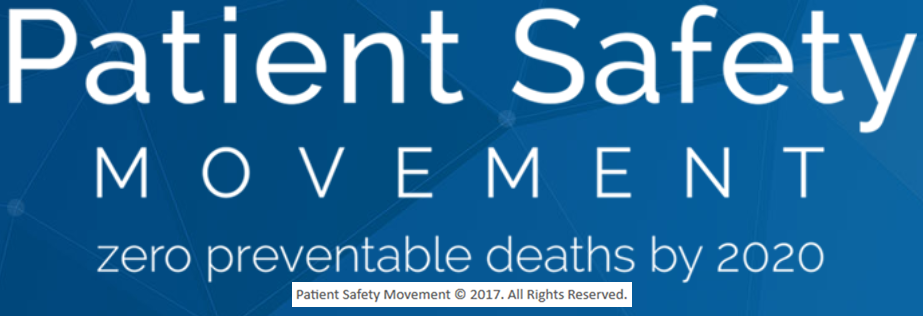
N.B. — This post is based on one of the continuously expanding roster of Actionable Patient Safety Solutions (APSS) a.k.a. “Challenges” as defined and described by the Patient Safety Movement Foundation (PSMF) and published at its web site (http://patientsafetymovement.org/challenges-solutions/actionable-patient-safety-solutions-apss/). Because the Foundation has set a goal of Zero Preventable Patient Deaths by 2020 (http://patientsafetymovement.org/), these APSS are understood to represent the most significant patient safety exposures created by medical mistakes, and medical mistakes are the third most frequent cause of patient deaths following heart disease and cancer (http://www.bmj.com/content/353/bmj.i2139).
“Medication errors (wrong drug, wrong dose, wrong patient or route of administration) are a major cause of inpatient morbidity and mortality. An effective program to reduce medication errors will require an implementation plan to complete the following actionable steps:
- Hospital leadership must understand the medication safety gaps in their own system, and be committed to a comprehensive approach to close those gaps.
- Create a multidisciplinary team, including physicians, nurses, pharmacists, and information technology personnel to lead the project.
- Implement systematic protocols for medication administration, featuring checklists for writing and filling prescriptions, drug administration, and transition of care, as well as other quality assurance tools. These tools will include:
- Installing the latest safety technology to prevent medication errors, such as the BD™ Medication Management System and First Databank FDB MedKnowledge™ system
- Use barcoding drug identification in the medication administration process.
- Check patient’s allergy profile before prescribing medication.
- Ensure appropriate training and safe operation of automated infusion technologies.
- Distinguish “look-alike, sound-alike” medications by labeling design and storage.
- Implement a system for follow-up to ensure medication adherence.
- Implement technology that standardizes Computerized Physician Order Entry (CPOE), reporting systems and quality assurance reports to audit compliance with safe drug administration practices.
- Practice the Five Patient Rights on Medications: right patient, right drug, right dose, right route, and right time of administration. All care providers should use this simple checklist.
- Provide education of all hospital personnel in the principles above. Monitor the effectiveness of this education at regular intervals.
- Review monitoring results at medical staff meetings and educational sessions as a part of Continuous Quality Improvement (CQI).”
The foregoing quote constitutes the “Executive Summary Checklist” from the above-captioned PSMF APSS Challenge #3 (http://patientsafetymovement.org/challenge/medication-errors/). The included bullet points are empirically based and appropriate, but even the vendor-specific (e.g. — BD™ Medication Management System) and generic (e.g. — CPOE) IT-based solutions mentioned lack the system-staff coordination and customization features needed to be reliable and effective in particular healthcare provider venues. These are the opportunities for a CHARTSaaS reference architecture-compatible solution to reliably mitigate mistakes and to save lives. Please validate this proposition to your own satisfaction by reviewing the details of the Cloud Healthcare Appliance Real-Time Solution as a Service (CHARTSaaS) and its reference architecture in these presentations and imagining an IT solution: